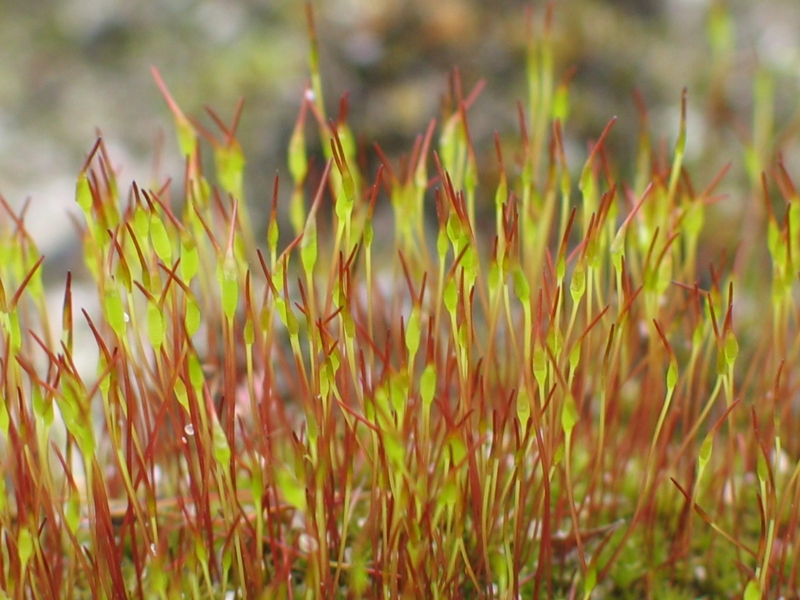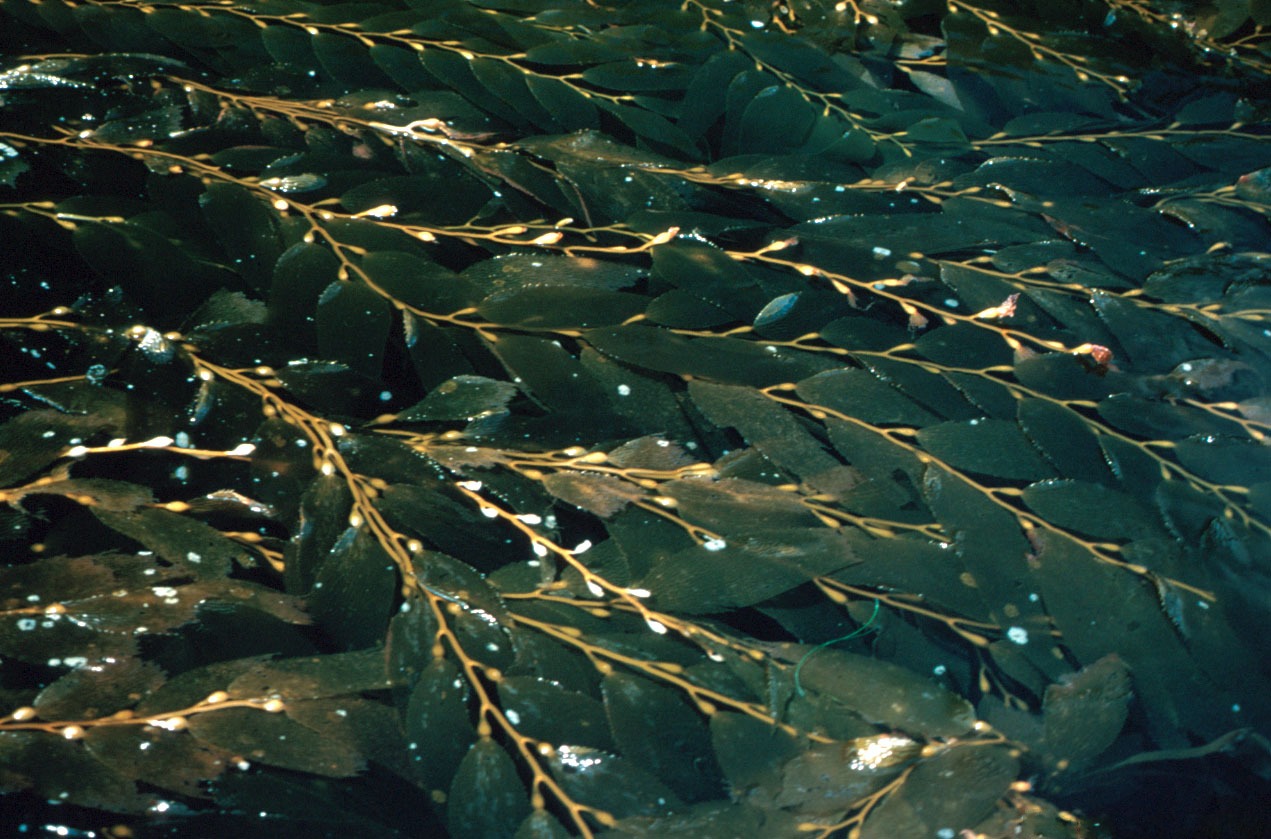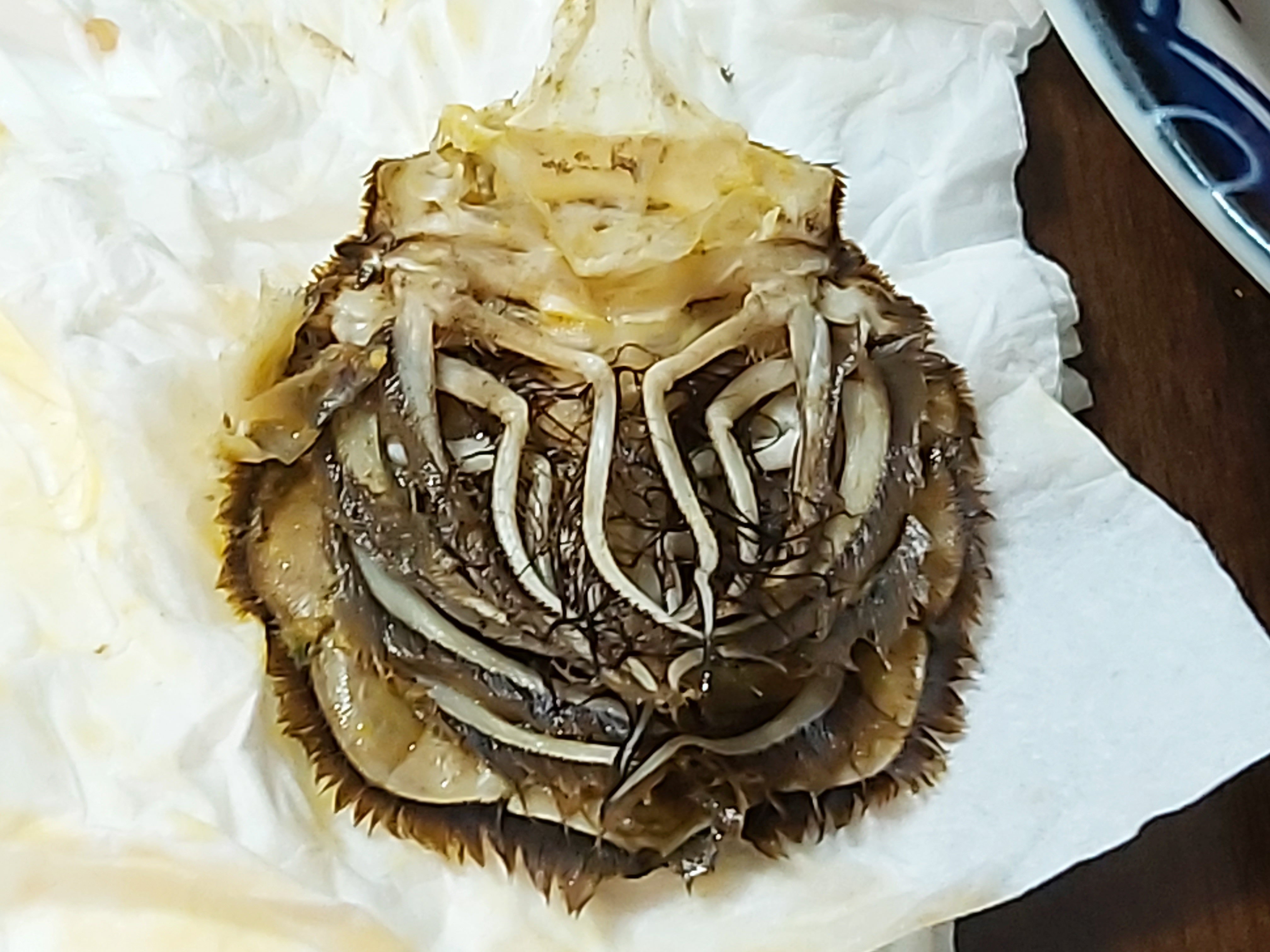|
Sunamphitoe Femorata
''Sunamphitoe femorata'' is a species of amphipod crustacean in the family Ampithoidae. It is a herbivore and constructs a tubular nest-like home on a blade of the sporophyte of the giant kelp ''Macrocystis pyrifera''. This home is made by rolling the sides of the blade together and securing them with silk. As the kelp blade grows, the nest is advanced down the blade towards the base, approximately keeping pace with the algal growth. Taxonomy The species was originally described in 1845 as ''Ampithoe femorata'' by Henrik Nikolai Krøyer and moved to ''Peramphithoe femorata in 1982. Following a phylogenetic analysis that found neither ''Peramphithoe'' nor ''Sunamphitoe'' monophyletic, with the species intermingled within a clade, the two genera were synonymised and ''Peramphithoe femorata'' renamed ''Sunamphitoe femorata''. Distribution ''Sunamphitoe femorata'' has been reported from the Caribbean Sea, Venezuela and the Southern Ocean. Behaviour ''Sunamphitoe femorata'' is a tu ... [...More Info...] [...Related Items...] OR: [Wikipedia] [Google] [Baidu] |
Henrik Nikolai Krøyer
Henrik Nikolai Krøyer (22 March 1799 – 14 November 1870) was a Danish zoologist. Born in Copenhagen, he was a brother of the composer Hans Ernst Krøyer. He started studying medicine at the University of Copenhagen in 1817, which he later changed to history and philology. While a student, he was a supporter of the Philhellenic movement, and he participated as a volunteer in the Greek War of Independence along with several fellow students. Upon his return to Denmark, Krøyer gained an interest in zoology. In 1827, he took the position as assistant teacher in Stavanger, where he met, and later married, Bertha Cecilie Gjesdal. Bertha's sister, Ellen Cecilie Gjesdal, was deemed unfit to bring up her child, so Henrik and Bertha adopted the boy, who took on the name Peder Severin Krøyer, and later became a well-known painter. Krøyer returned to Copenhagen in 1830 where he was employed as a teacher in natural history at the Military Academy. As the course lacked a textbook, Kr� ... [...More Info...] [...Related Items...] OR: [Wikipedia] [Google] [Baidu] |
Amphipoda
Amphipoda () is an order (biology), order of malacostracan crustaceans with no carapace and generally with laterally compressed bodies. Amphipods () range in size from and are mostly detritivores or scavengers. There are more than 10,700 amphipod species currently recognized. They are mostly marine animals, but are found in almost all aquatic environments. Some 2,250 species live in fresh water, and the order also includes the terrestrial Talitridae, sandhoppers such as ''Talitrus saltator'' and ''Arcitalitrus sylvaticus''. Etymology and names The name ''Amphipoda'' comes, via Neo-Latin ', from the Greek language, Greek root (linguistics), roots 'on both/all sides' and 'foot'. This contrasts with the related Isopoda, which have a single kind of thoracic leg. Particularly among Angling, anglers, amphipods are known as ''freshwater shrimp'', ''scuds'', or ''sideswimmers''. Description Anatomy The body of an amphipod is divided into 13 segments, which can be tagmosis, grouped ... [...More Info...] [...Related Items...] OR: [Wikipedia] [Google] [Baidu] |
Crustacean
Crustaceans (from Latin meaning: "those with shells" or "crusted ones") are invertebrate animals that constitute one group of arthropods that are traditionally a part of the subphylum Crustacea (), a large, diverse group of mainly aquatic arthropods including decapods (shrimps, prawns, crabs, lobsters and crayfish), seed shrimp, branchiopods, fish lice, krill, remipedes, isopods, barnacles, copepods, opossum shrimps, amphipods and mantis shrimp. The crustacean group can be treated as a subphylum under the clade Mandibulata. It is now well accepted that the hexapods (insects and entognathans) emerged deep in the Crustacean group, with the completed pan-group referred to as Pancrustacea. The three classes Cephalocarida, Branchiopoda and Remipedia are more closely related to the hexapods than they are to any of the other crustaceans ( oligostracans and multicrustaceans). The 67,000 described species range in size from '' Stygotantulus stocki'' at , to the Japanese ... [...More Info...] [...Related Items...] OR: [Wikipedia] [Google] [Baidu] |
Ampithoidae
Ampithoidae is a family of amphipod crustaceans. The family has a worldwide distribution as algal dwellers. They commonly create tube-shaped nests on their host plants or algae which serve as both shelter and food. Young ampithoids develop from eggs to a larval stage within their mother's brood-pouch, formed by the appendages of her abdomen. Genera The World Register of Marine Species includes the following genera in this family:- *'' Amphithoides'' Kossmann, 1880 *'' Amphitholina'' Ruffo, 1953 *'' Ampithoe'' Leach, 1814 *'' Austrothoe'' Peart, 2014 *'' Biancolina'' Della Valle, 1893 *'' Cymadusa'' Savigny, 1816 *'' Exampithoe'' K.H. Barnard, 1926 *'' Macropisthopus'' K.H. Barnard, 1916 *'' Paradusa'' Ruffo, 1969 *'' Paragrubia'' Chevreux, 1901 *'' Paranexes'' Peart, 2014 *'' Pleonexes'' Spence Bate, 1857 *'' Plumithoe'' Barnard & Karaman, 1991 *'' Pseudamphithoides'' Ortiz, 1976 (e.g. '' Pseudamphithoides incurvaria'') *'' Pseudopleonexes'' Conlan, 1982 *'' Sunamphitoe'' Spence ... [...More Info...] [...Related Items...] OR: [Wikipedia] [Google] [Baidu] |
Sporophyte
A sporophyte () is one of the two alternation of generations, alternating multicellular organism, multicellular phases in the biological life cycle, life cycles of plants and algae. It is a diploid multicellular organism which produces asexual Spore, spores. This stage Alternation of generations, alternates with a multicellular haploid gametophyte phase. Life cycle The sporophyte develops from the zygote produced when a haploid egg cell is fertilized by a haploid sperm and each sporophyte cell therefore has a double set of chromosomes, one set from each parent. All Embryophyta, land plants, and most multicellular algae, have life cycles in which a multicellular diploid sporophyte phase alternates with a multicellular haploid gametophyte phase. In the Spermatophyte, seed plants, the largest groups of which are the gymnosperms (bare seeds) and angiosperms (fruiting plants), the sporophyte phase is more prominent than the gametophyte, and is the familiar green plant with its roots, ... [...More Info...] [...Related Items...] OR: [Wikipedia] [Google] [Baidu] |
Macrocystis Pyrifera
''Macrocystis'' is a monospecific genus of kelp (large brown algae) with all species now synonymous with ''Macrocystis pyrifera''. It is commonly known as giant kelp or bladder kelp. This genus contains the largest of all the Phaeophyceae or brown algae. ''Macrocystis'' has pneumatocysts at the base of its blades. Sporophytes are perennial and the individual may live for up to three years; stipes/fronds within a whole individual undergo senescence, where each frond may persist for approximately 100 days. The genus is found widely in subtropical, temperate, and sub-Antarctic oceans of the Southern Hemisphere and in the northeast Pacific. ''Macrocystis'' is often a major component of temperate kelp forests. Despite its appearance, it is not a plant; it is a heterokont. Giant kelp is common along the coast of the northeastern Pacific Ocean, from Baja California north to southeast Alaska, and is also found in the southern oceans near South America, South Africa, Australia, and New ... [...More Info...] [...Related Items...] OR: [Wikipedia] [Google] [Baidu] |
Brown Alga
Brown algae (: alga) are a large group of multicellular algae comprising the class Phaeophyceae. They include many seaweeds located in colder waters of the Northern Hemisphere. Brown algae are the major seaweeds of the temperate and polar regions. Many brown algae, such as members of the order Fucales, commonly grow along rocky seashores. Most brown algae live in marine environments, where they play an important role both as food and as a potential habitat. For instance, '' Macrocystis'', a kelp of the order Laminariales, may reach in length and forms prominent underwater kelp forests that contain a high level of biodiversity. Another example is '' Sargassum'', which creates unique floating mats of seaweed in the tropical waters of the Sargasso Sea that serve as the habitats for many species. Some members of the class, such as kelps, are used by humans as food. Between 1,500 and 2,000 species of brown algae are known worldwide. Some species, such as '' Ascophyllum nodosu ... [...More Info...] [...Related Items...] OR: [Wikipedia] [Google] [Baidu] |
Substrate (biology)
In biology, a substrate is the surface on which an organism (such as a plant, fungus, or animal) lives. A substrate can include biotic or abiotic materials and animals. For example, encrusting algae that lives on a rock (its substrate) can be itself a substrate for an animal that lives on top of the algae. Inert substrates are used as growing support materials in the hydroponic cultivation of plants. In biology substrates are often activated by the nanoscopic process of substrate presentation. In agriculture and horticulture * Cellulose substrate * Expanded clay aggregate (LECA) * Rock wool * Potting soil * Soil In animal biotechnology Requirements for animal cell and tissue culture Requirements for animal cell and tissue culture are the same as described for plant cell, tissue and organ culture (In Vitro Culture Techniques: The Biotechnological Principles). Desirable requirements are (i) air conditioning of a room, (ii) hot room with temperature recorder, (iii) microsc ... [...More Info...] [...Related Items...] OR: [Wikipedia] [Google] [Baidu] |
Holdfast (biology)
A holdfast is a root-like structure that anchors aquatic sessile organisms, such as seaweed, other sessile algae, stalked crinoids, benthic cnidarians, and sponges, to the substrate. Holdfasts vary in shape and form depending on both the species and the substrate type. The holdfasts of organisms that live in muddy substrates often have complex tangles of root-like growths. These projections are called haptera and similar structures of the same name are found on lichen A lichen ( , ) is a hybrid colony (biology), colony of algae or cyanobacteria living symbiotically among hypha, filaments of multiple fungus species, along with yeasts and bacteria embedded in the cortex or "skin", in a mutualism (biology), m ...s. The holdfasts of organisms that live in sandy substrates are bulb-like and very flexible, such as those of sea pens, thus permitting the organism to pull the entire body into the substrate when the holdfast is contracted. The holdfasts of organisms that liv ... [...More Info...] [...Related Items...] OR: [Wikipedia] [Google] [Baidu] |
Pneumatocyst
In phycology, a pneumatocyst is a floating structure that contains gas found on brown seaweed. A seaweed's thallus may have more than one. They provide buoyancy to lift the blades toward the surface, allowing them to receive more sunlight for photosynthesis Photosynthesis ( ) is a system of biological processes by which photosynthetic organisms, such as most plants, algae, and cyanobacteria, convert light energy, typically from sunlight, into the chemical energy necessary to fuel their metabo .... The proportion of gases in the pneumatocysts varies depending on the physiological status of the alga and the partial pressure of gases in the surrounding air or water. The pneumatocyst can hold O2, CO2, N2, and CO. References Further reading Brown algae {{Phaeophyceae-stub ... [...More Info...] [...Related Items...] OR: [Wikipedia] [Google] [Baidu] |
Pereopod
The anatomy of a decapod consists of 20 body segments grouped into two main body parts: the cephalothorax and the pleon (abdomen). Each segment – often called a somite – may possess one pair of appendages, although in various groups these may be reduced or missing. Cephalothorax Head # antennules # antennae #mandibles # first maxillae # second maxillae The head also bears the (usually stalked) compound eyes. The distal portion of a mandible or maxilla which has a sensory function is known as a palp. Thorax / pereon #first maxillipeds #second maxillipeds #third maxillipeds #first pereiopods #second pereiopods #third pereiopods #fourth pereiopods #fifth pereiopods Maxillipeds are appendages modified to function as mouthparts. Particularly in the less advanced decapods, these can be very similar to the pereiopods. Pereiopods are primarily walking legs and are also used for gathering food. They are also the ten legs from which decapods take their name. Those pereiopods which ar ... [...More Info...] [...Related Items...] OR: [Wikipedia] [Google] [Baidu] |
Meristem
In cell biology, the meristem is a structure composed of specialized tissue found in plants, consisting of stem cells, known as meristematic cells, which are undifferentiated cells capable of continuous cellular division. These meristematic cells play a fundamental role in plant growth, regeneration, and acclimatization, as they serve as the source of all differentiated plant tissues and organs. They contribute to the formation of structures such as fruits, leaves, and seeds, as well as supportive tissues like stems and roots. Meristematic cells are totipotent, meaning they have the ability to differentiate into any plant cell type. As they divide, they generate new cells, some of which remain meristematic cells while others differentiate into specialized cells that typically lose the ability to divide or produce new cell types. Due to their active division and undifferentiated nature, meristematic cells form the foundation for the formation of new plant organs and the c ... [...More Info...] [...Related Items...] OR: [Wikipedia] [Google] [Baidu] |





